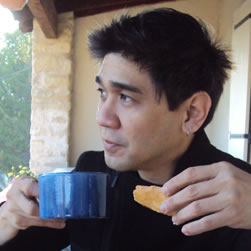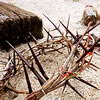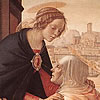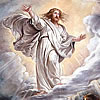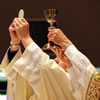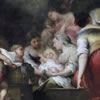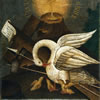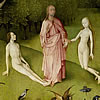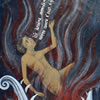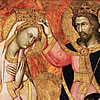Dedication of St. Mary Major Basilica
One might ask why do we celebrate the dedication of this particular church. It has to do with a little Church History. In the first century, Christians professed Christ is Lord and were persecuted by Romans who insisted Caesar is lord. In general, Christians could not worship publicly and kept things under the radar. When the Edict of Milan tolerated Christianity, Christians came out of the woodwork, thrived, and began exercising their mental muscles. Now they had time to peruse Christ. While the divinity of Christ was never in question, how he is divine and how he is human became a constant source of argument.
It was a period of doctrinal turmoil when one movement after another presented different ideas about this topic. I man named Nestorius challenged the orthodox idea that Jesus is one person with two natures. He promoted the idea that two persons came together in Jesus, one was human and the other divine. The next natural step for him was to challenge the title for Mary, “Theotokos” – God-bearer or “Mother of God” – because, he says, the divine person in Jesus was not a result of Mary who can only produce persons of a human nature.
There were two problems with Nestorius’ teaching. The first is there is only one person in Jesus, not two. The Second-person of the Blessed Trinity became man, and is the same person as Jesus. The second problem of Nestorius’ teaching is that mothers do not give birth to natures: they give birth to persons. A mother says, “I am a mother of that person”, they would never say, “I am the mother of that person’s nature.”
It was Cyril of Alexandria that went head-to-head with Nestorius on this matter. Eventually, Cyril brought this up with Emperor Theodosius II who called the council of Ephesus in 431 and there the council declared the teaching of Nestorius a heresy, and as a result of this, Mary can be rightly called “Mother of God.”
While this was going on, legend has it that Mary appeared in a dream to Pope Liberius and simultaneously to a wealthy layman, Giovanni Patrizio. This prompted Giovanni and his wife with the desire to leave their possessions to the church. They prayed that Mary would show them how. Their prayers were answered for during the height of summer on August 5, snow fell on Esquiline Hill. They took it as a sign and there they built a basilica. For this reason, the basilica was once known as St. Mary of the Snow. (It is also called St. Mary of the Crib because it houses a reliquary for five planks of Jesus’ crib.)
The two stories dovetail when Sixtus III became the Pope in 432 when thereafter, he decided to undertake a major renovation of the basilica. Upon its completion, he dedicated it to the “Mother of God” – a way of celebrating and enforcing the declaration of the Council of Ephesus that Mary is Theotokos.
There are only four major basilicas in the Roman Catholic Church, and the largest of them is this basilica now known as St. Mary Major. (The other ecclesiastical basilicas are St. John Lateran, St. Peter, and St. Paul outside the Walls). When in Rome, you may need to look for it using its Italian name: Santa Maria Maggiore.
The title “Mother of God” does not elevate Mary to a goddess status – it was never used that way. Instead, this title safeguards Christ’s divinity. Thus, the dedication of the basilica is important because it reminds us that Jesus, the son of Mary, is God. That is what this basilica stands for.

Beyond the Veil
Contemplating the Mysteries of the Holy Rosary
Prayer giants like Pope St. John Paul II, Pope Paul VI, Bl. Archbishop Fulton Sheen, and Bishop Robert Baron advocate that we contemplate on the mysteries of the rosary while we say the vocal prayers. Unfortunately, there are not many books that teach us how to do this. Beyond the Veil comes to the rescue by suggesting seven ways we can pray the rosary the way it was intended.
The larger part of the book offers mental images for each of the mysteries we can use in our contemplation, for how can we imagine the scenes in the rosary if we don't know about them?
Get your copy now either in Hardbound, Paperback, or Kindle

100 Things Every Catholic Should Know
Whether or not you are new to the Catholic Church, or struggling, or lapsed, or dynamically involved, this book will enlighten you with the essentials of the Faith that have been handed down to us by the apostles.
Each of the 100 topics is easy to read and distilled into bite-sized portions. Through cross-referencing, the book also shows how the topics are interrelated. Those who are new to the Faith will find this book an edifying handy reference, and those who have simply forgotten will find it a great review material that might spark a new love for God and religion.
Get your copy now either in Hardbound, Paperback, or Kindle

A Sky Full of Stars
Know Our Lady through her Titles in the Litany
The Church helps us understand who Mary is by honoring her with different titles in the Litany of the Blessed Virgin Mary. Unfortunately, over time and difference of culture, we might not grasp what it is the Church is ascribing to her and lose that opportinity to get to know her.
In A Sky Full of Stars, each title of the Litany is explained so we get know Mary more and fall in love with her all over again.
Get your copy now either in Hardbound, Paperback, or Kindle
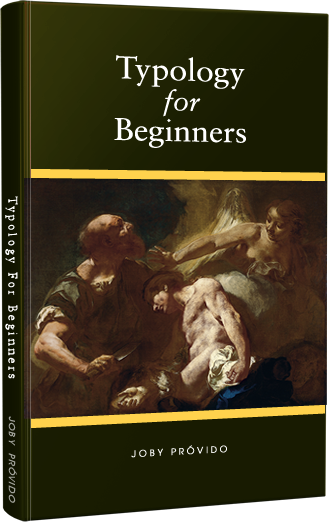
Typology for Beginners
A Catholic Perspective on understanding the New Testament through the Old Testament
First-century Jews converted to Christianity in droves because of the way the New Testament was written to show Jesus was the Messiah promised by the Old Testament. We also learn about how Mary is the New Eve and the Ark of the Covenant in the way the writers portray her.
Through typology, the patterns that connect the Old and New Testaments make the Bible stories more accessible so that one becomes excited to read Sacred Scripture again.
Get your copy now either in Hardbound, Paperback, or Kindle



